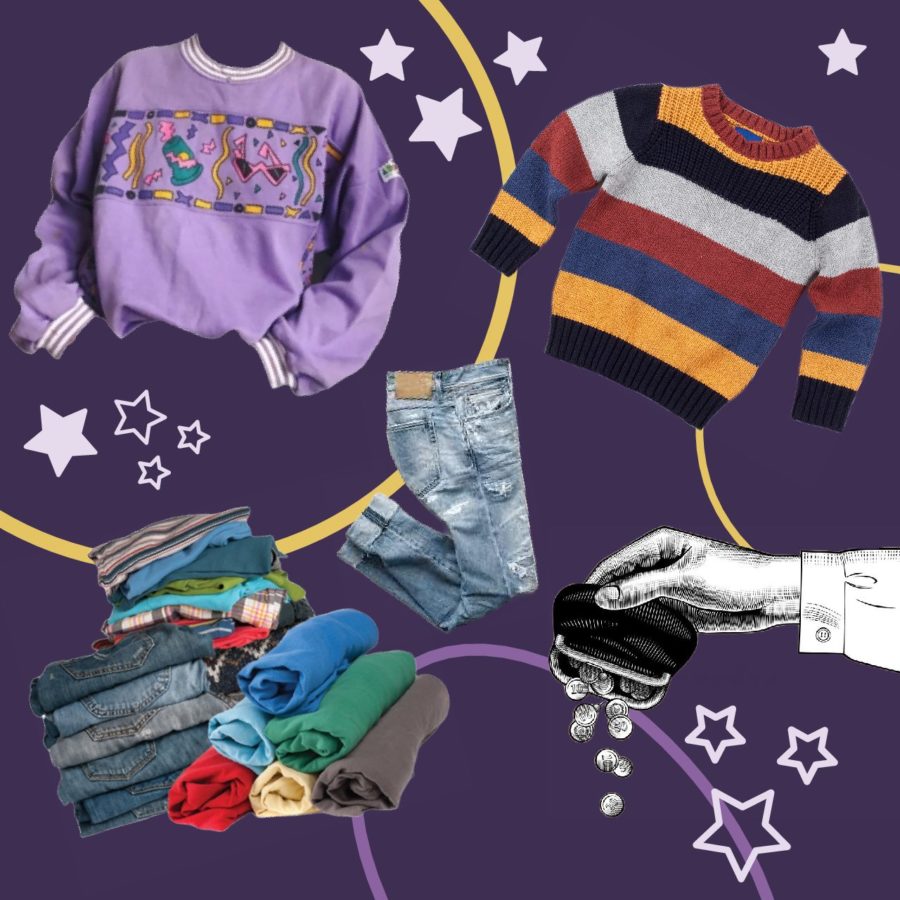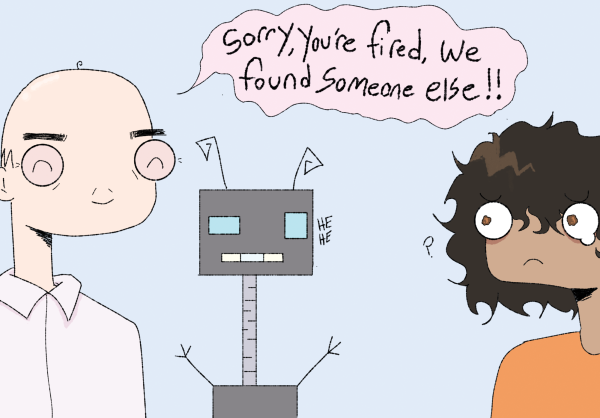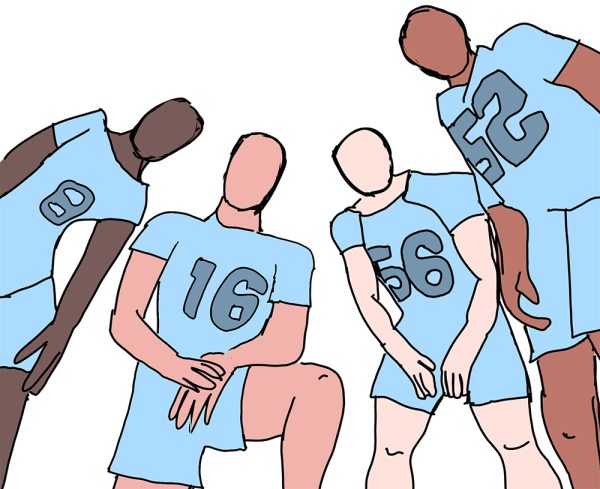Thrifting and fast fashion are inextricably tangled
Fast fashion is everywhere these days. To avoid purchasing ethically questionable goods, to find cheap prices, or to strike fashion gold, many people, especially those in the younger generation, have been turning to thrift stores.
However, long-time thrifters may have noticed that thrifting is not what it once was. Racks are clogged with low-quality fast fashion items, and it’s more difficult than ever to find durable attire. But from this unfortunate reality arises an uncomfortable and pressing truth: thrifting cannot exist without fast fashion.
Thrift stores haven’t been around forever. Until the industrial revolution, people didn’t have that many items of clothing. They made what they had last as long as possible before, usually, transforming it into something new.
“In an earlier era nothing went to waste,” Olivia B. Waxman wrote in her article, “People Have Been Reusing Clothes Forever But Thrift Shops are Relatively New. Here’s Why,” for Time.
When clothing began to be mass-produced around the 1890s, second-hand stores started popping up as consumers gained excess apparel. As clothing became more and more readily available during the 20th century, thrift stores began growing in popularity.
Estrella Sevilla Meza, a marketing specialist for Buffalo Exchange, a second-hand store in Portland, stated that the attitude towards clothing has changed in general.
“Past generations bought clothing and accessories with the idea that they’d keep them forever—or at least until they were worn out,” Sevilla Meza said. “Gen Z and Millennial shoppers buy pieces with the idea that they’ll wear them a few times or as long as they feel like it and then trade them in for something new-to-them.” Sevilla Meza’s comment brings to light the fact that thrifting, despite its economic and environmental benefits, has come to encourage a culture of disposable clothing.
The possibility of finding a rare or valuable item for a low price has always been compelling, and this is the often-unfulfilled dream that many shoppers wander into a thrift store with. But finding gems hasn’t always been this hard.
“The Golden Age of Thrifting is Over,” an article in the New York Times by Isabella Grullón Paz, chronicles personal accounts of women who grew up thrifting and have witnessed the overall quality of items in thrift stores depreciate. Because of the overwhelming amount of cheap, quickly manufactured attire, quality items are buried. The effort to find them often no longer feels worthwhile.
However, from this thrifting culture has arisen a new phenomenon: online resellers, who will dig through the endless racks for you and allow you to thrift from anywhere—though at a slighwtly higher price.
Goodwill, one of the oldest thrift store chains in the country, released a statement addressing fast fashion in their stores on Aug. 18, 2022. It was penned by the Goodwill NYNJ President and CEO Katy Gaul-Stigge. The short announcement reveals that Goodwill feels equally threatened by online resellers as by fast fashion itself.
The statement acknowledges the truth shared in the article written by Grullón Paz’s article and then pivoted, writing, “fast fashion isn’t the only issue affecting the assortment of clothes at thrift stores. More people are selling higher-end and everyday clothing for consignment to Thred up and other resellers.” When people choose to turn a profit rather than donate unneeded clothing, this makes thrifting quality clothes even more innaccessible to people on a budget.
It makes sense that, in the age of convenience, shoppers would prefer to buy even second-hand clothing from the comfort of their couch, and online resellers, like Thredup and Depop, make this possible and ever so easy. But people seeking to make a profit off of high-quality secondhand clothing are making it harder for the people who really need such items to find or afford them. When resellers pick through second-hand clothing selections and clear our all the desirable items, it’s sure that lower-income shoppers will no longer be able to afford them, and are left to make do with the clothing deemed less worthy. And they are less worthy: resellers have no incentive to buy low-quality or unfashionable items that will inevitably sell less well.
The Berkeley Economic Review staff wrote an article in which they state, “unique and vintage items at affordable prices targeted towards underprivileged and marginalized communities then end up on an online marketplace that serves both consumers looking to dress respectably on a budget and those who are invested in finding a unique look for any price.”
Resellers absolutely do not clear out thrift stores: instead, they just take the items they think everyone will want. Left behind, of course, is the poorly made fast fashion apparel that is nobody’s first choice.
In “The Golden Age of Thrifting is Over,” Adam Minter, the author of “Secondhand: Travels in the New Global Garage Sale,” commented, “There’s all these clothes out there, but it’s just that they may not be as durable as you’d like.”
Fast fashion has resulted in a huge influx of attire, but many items are made of cheap materials that don’t hold up well to time, wear or the washing machine. These items do more than create a subpar thrifting experience; they expose the deteriorating quality standards in the clothing industry.
Still, it cannot be denied that thrift stores give fast fashion a new lease on life. Instead of heading straight for the landfill, donating clothing gives it an opportunity to be discovered by a new owner that will hopefully use it well. For those who can’t afford costlier, higher-quality clothing, thrifting still offers a more wallet-and-environmentally-friendly option.
Elizabeth Williams, shopkeeper at the consignment store Take It or Leave It, stated, “We want the right person to come in and be able to afford it if it fits.”
While their store does have criteria for what it will take, Williams expressed that they do not reject fast fashion items and that such clothing even sells well, at least at their store.
“There’s definitely certain designer brand names that are known to be high quality that are known to sell fast that, you know, that are always going to sell fast,” Williams said. “But the inexpensive, and…the fast fashion stuff is both like, cheap, but it’s also trendier, you know, it’s cool. It’s like $4 to wear something kind of risky, but maybe it’ll feel really cool…so that stuff does sell really well.”
Fast fashion may feel like a creeping infection, with low-quality synthetic garb popping up left and right, infiltrating second hand stores and garbage dumps. At the same time, thrifting wouldn’t exist without it. To avoid fueling an industry that is so terribly damaging to our environment, many have turned to another that subsists on that very system. The mega-industrialization of fast fashion has completely changed what thrifting used to be, making selections undesirable and the overall experience less thrilling, especially when all you can manage to scrounge up are disintegrating Shein items.
Thrifting’s “golden age” may have passed, but perhaps that was inevitable.
Thisbe Delamarter (she/her) is a senior who loves reading, learning and soccer. She loves journalism because she enjoys investigating and sharing new perspectives.












